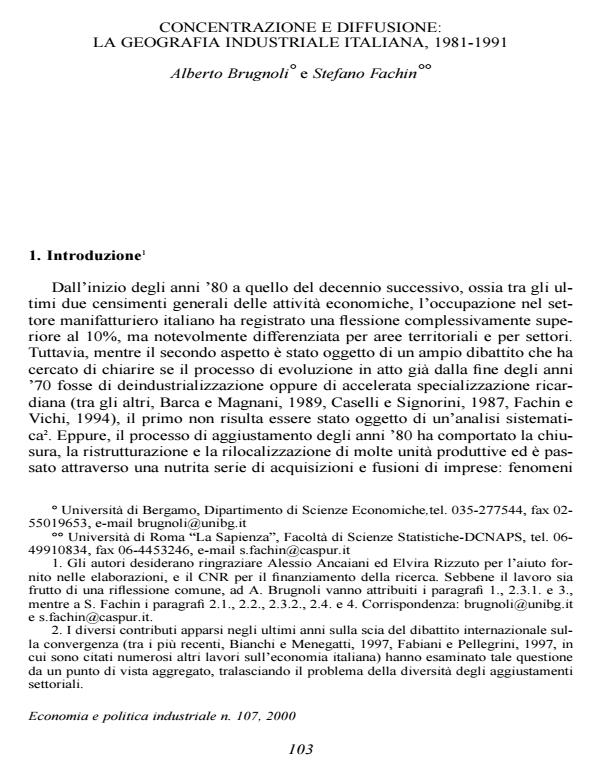Concentrazione e diffusione: la geografia industriale italiana 1981-1991
Titolo Rivista ECONOMIA E POLITICA INDUSTRIALE
Autori/Curatori Alberto Brugnoli, Stefano Fachin
Anno di pubblicazione 1 Fascicolo 2000/107
Lingua Italiano Numero pagine 25 P. Dimensione file 84 KB
DOI
Il DOI è il codice a barre della proprietà intellettuale: per saperne di più
clicca qui
Qui sotto puoi vedere in anteprima la prima pagina di questo articolo.
Se questo articolo ti interessa, lo puoi acquistare (e scaricare in formato pdf) seguendo le facili indicazioni per acquistare il download credit. Acquista Download Credits per scaricare questo Articolo in formato PDF

FrancoAngeli è membro della Publishers International Linking Association, Inc (PILA)associazione indipendente e non profit per facilitare (attraverso i servizi tecnologici implementati da CrossRef.org) l’accesso degli studiosi ai contenuti digitali nelle pubblicazioni professionali e scientifiche
The aim of this paper is to examine the industrial geography of Italy on the basis of the employment data of the last two general censuses (1981-1991). Having first shown how maps in the geographical concentration-geographical autocorrelation space may help in distinguishing industries according to their localization patterns, we constructed such maps for 13 manufacturing industries (NACE rev. 1 classification). The conclusions reached are that three main patterns seem to have driven the localization trends over the period of interest: 1) a first pattern leads a small number of distinct centres, each extending over a few neighbouring provinces, and applies to industries including companies of small average size (Textiles, Apparel and Leather, Rubber and Plastic, Machinery, Fabricated Metal, Stone). The concept of Marshallian district seems to be highly relevant for this localization pattern; 2) a second pattern leads a very small number of distinct, single-province, centres, and applies to industries including companies of large average size (Paper and printing, Chemicals, Petroleum, Electrical machinery, Transportation equipment), possibly suggesting the existence of a centre-periphery mechanism driven by returns to scale still in action; 3) finally, a third pattern is relevant for industries with small companies (Food and Timber), which appears to cluster in a large number of non-neighbouring provinces, possibly confirming Weber’s (1929) view of the localization patterns as mostly driven by distance from raw materials sources and markets.
Alberto Brugnoli, Stefano Fachin, Concentrazione e diffusione: la geografia industriale italiana 1981-1991 in "ECONOMIA E POLITICA INDUSTRIALE " 107/2000, pp , DOI: